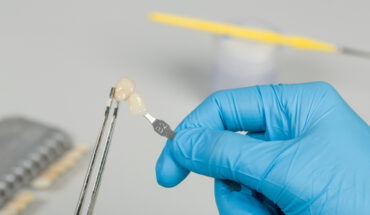
Clear aligner treatments, or invisible braces, have progressed immensely since its inception in the late 1990s and FDA approved in 1998. Twenty-five years of innovation and development in biomechanics, biomaterials and orthodontics means an alternative to standard braces, a technique invented in 1819, by Frenchman Christophe-Francois Delabarre. The French had been making notable advances in dentistry in 1728 with the bandeau (mouth guard), which was thought to help teeth stay in position; and in 1757 when wisdom teeth were being removed to manage overcrowding.
In the realm of teeth straightening, from the development of a wire “crib” which was placed directly over each set of two teeth, to the metal braces with which we are all familiar, the historical turning point came in 1843. It was revolutionary in realignment procedures when New York dentist and firearm inventor Dr Edward Maynard added elastics for jaw alignment, identifying it as an essential element in the correction of overbites and crooked teeth.
It wasn’t until 1950s that the malleable 14-to-18 karat gold wires, clasps, ligatures and spurs were replaced with stainless steel for practicality and price. In the mid 70s the idea formed that securing the brackets and wire to the back, rather than front of the teeth would in fact achieve the same result, be more visually pleasing and retain some confidence for the patient. Thus Incognito braces became available.
It took two decades for the next original change to arrive in orthodontics.
The technology behind the original Invisalign trays was the brainstorm of two Stanford University graduates, Kelsey Wirth and Zia Chishti. After his metal braces were removed, Chishti’s orthodontist gave him a plastic retainer to keep his teeth in position. Chishti soon realised that the plastic retainer could move his teeth into place whenever they were out of alignment; and it was that that had him consider the possibility of straightening teeth without metal braces and instead using just a plastic retainer.
He endeavoured to create a more convenient, less invasive and much less visible alternative to stainless steel and ceramics.
With a background in Computer Science, Chishti recognised 3D CAD software, computer programming and 3D printing technology could create these new, incremental teeth aligners. He shared his idea with fellow Stanford student Kelsey Wirth, they garnered two more partners, and formed Align Technology in 1997 set up shop in a garage in Silicon Valley.
Clear Aligners or invisible braces are a series of plastic aligners designed from the digital scans, or prosthodontic siloxane impressions of your teeth. The aligners are moulds of your teeth that use gentle pressure to slightly reposition over time. Each set of aligners is worn for a week or two until teeth progress to their ideal clinical alignment.
This orthodontic system improves almost every year with fine-tuning of the force systems applied, giving excellent control of movement of the root with respect to the crown. A tooth, or groups of teeth, can be staged to move simultaneously; resulting in short treatment times for straightforward issues, or sequentially for treatments more complex.
There are clear aligner competitors to Invisalign such as Smilestyler. Both options require a dental consultation for a 3D intra-oral scan of teeth and gums and an assessment to determine suitability.
Invisalign manufactures on average, 40 aligners for the entire treatment; SmileStyler custom-makes your first set of aligners that are worn for 6-12 weeks, after which your dentist will then take another scan for SmileStyler to produce the next set.
Invisalign’s cosmetic appeal extends far beyond the edge of most cities and manufactures overseas. SmileStyler is an Australian product, and aligners are worn for one-to-two weeks in comparison to 2-3 with Invisalign. Both treatments require 20-22 hours of wearing a day.
Invisalign developed the state-of-the-art polymer SmartTrack material and SmartForce system to create a coherent technique that can treat even the most challenging cases, and the providers of Invisalign swear by its efficacy. Since its 1997 invention and the subsequent patenting, the system has been used by more than 1.5 million patients worldwide, and with gross margins in excess of almost 80%, Align Technology earns well over a billion dollars a year from Invisalign products.
A 36-page lawsuit was filed on May 3, 2021 in the U.S. District Court of the Northern District of California, in a class action accusing Align of violating federal antitrust laws, and various consumer protection laws by monopolising the dental aligner market. It subsequently controls more than 80% of the market, and continues with a variety of anticompetitive tactics in its dogged determination to quash any alternative to an Invisalign purchase.
The global class action against Invisalign asserts that consumers unknowingly paid inflated prices for Invisalign treatments, and deserve consumer compensation for the monopoly held in the clear aligner market by its parent company.




